Table of Contents
Update September 2023
Have you made the trip to explore Washington, DC? Why is America’s capital city a popular destination? A walking tour of Washington’s monumental treasures can reveal why Washington, D.C. It’s a city steeped in history, of iconic monuments and landmarks that reflect the rich tapestry of American heritage.
On a recent trip to see the city, I walked to the National Mall. I found myself fascinated by the history of each monument. They are a testament to this great country, a timeline of sorts on the creation of our nation. I recommend doing a walking tour of Washington’s monumental treasures and, if it’s not already on your bucket list, add it. Although they do not consider the National Mall a National Park, it is a part of the National Park System.
This post may contain affiliate links, meaning if you purchase something through one of these links. We may earn a small commission at no extra cost to you! Read the full disclosure policy here.
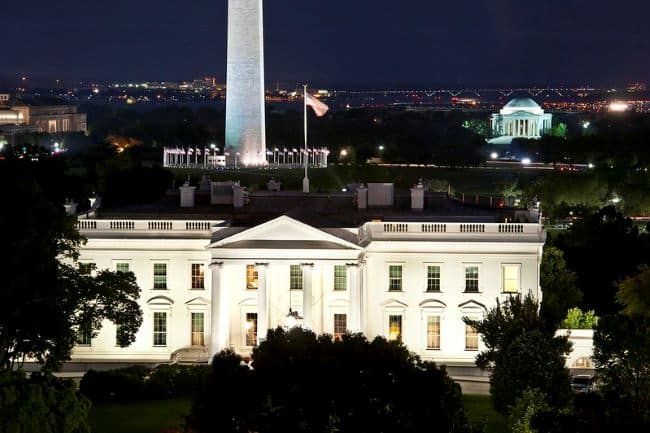
Noteworthy Memorials: Discovering History, Honor, and Reflection
From the solemnity of the Lincoln Memorial to the grandeur of the Washington Monument, this walking tour takes you on a journey through the heart of the nation’s capital, showcasing its monumental treasures.
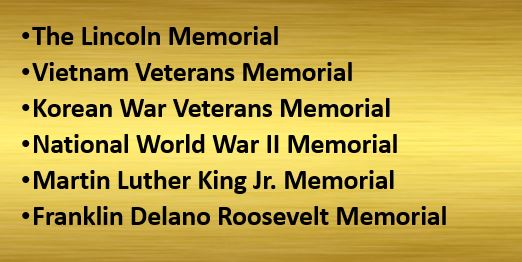
The National Mall is a green promenade in the city’s heart. Pennsylvania, Constitution, Independence Avenue, and the Potomac River surround the park. Foremost, walking is the best way to see the monuments. Reserve a trolley tour if you prefer to ride. The narrated trolley tours allow you can hop off and on all day long. Download the National Mall App to help you navigate the park or print a downloadable park brochure. The signs on the self-guided trail are easy to follow. Using the app will point you in the right direction.
Walking tour of Washington DC monuments: What You Need to Know Before You Explore
- Admission Fees: Most of the monuments and memorials in Washington, D.C. are free to visit. This includes landmarks like the Lincoln Memorial, Washington Monument, Vietnam Veterans Memorial, and World War II Memorial. You need a timed ticket to visit the top of the Washington Monument; reserve it in advance or buy it at the Monument’s ticket office, though the grounds are free to enter.
- Hours of Operation: Most monuments and memorials are open 24/7, but certain sites, like the Washington Monument, have set hours (typically from 9 a.m. to 5 p.m.).
- Accessibility: Most of the memorials are wheelchair accessible, but be sure to check on specific facilities, as some areas can be hard to reach, especially if you plan on visiting during crowded times.
- Public Transportation: The National Mall and surrounding monuments are easily accessible by public transportation. The Smithsonian Metro Station is close to many of the monuments, and buses are available for longer distances.
- Weather Considerations: The weather in D.C. can vary, so check the forecast before your visit. Summers can be, while winters can be cold and occasionally snowy. Every time we have visited, we’ve needed our Storm Jacket because of the heavy rains.
When is the Best Time to Visit the Washington Memorials & Monuments?
Spring (April to June) and fall (September to November). These seasons offer mild weather and fewer crowds compared to the hot/humid summer months. If you want to avoid crowds, try visiting early in the morning or later in the evening. The monuments are often quieter at these times, and you’ll also get the opportunity to see them beautifully lit up at night. Summer (June to August) is the busiest time, with more tourists and higher temperatures.
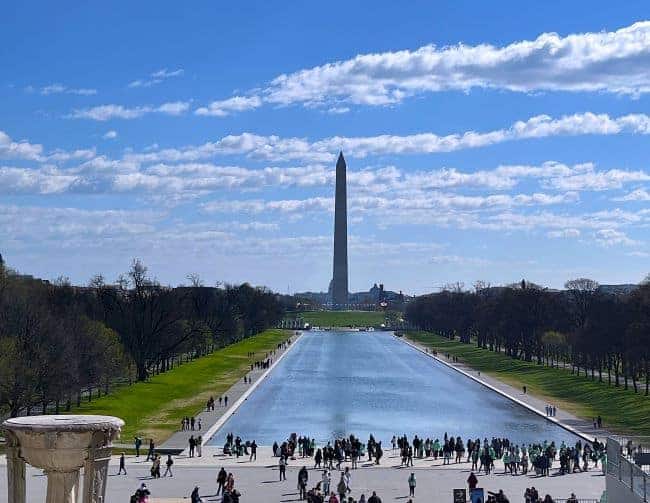
Stop 1: Monument walk in the National Mall – Discovering the Heart of Washington, D.C
If you have kids, consider a Ranger-led activity as they are free too. I love my NPS Passport Books. However, the Junior Ranger booklet has a page to put stamps on 8 of the monuments or just use the park brochure or a blank paper. The bookstore or information center at each location has the National Park Passport Cancellation Stamp.
Our journey begins at the heart of Washington, D.C., the National Mall. Stretching for over two miles, the most significant monuments and memorials in the United States flank this iconic green space. Start by gazing at the breathtaking view of the U.S. Capitol in the distance, then make your way to the Washington Monument, the towering obelisk that has become synonymous with the city.
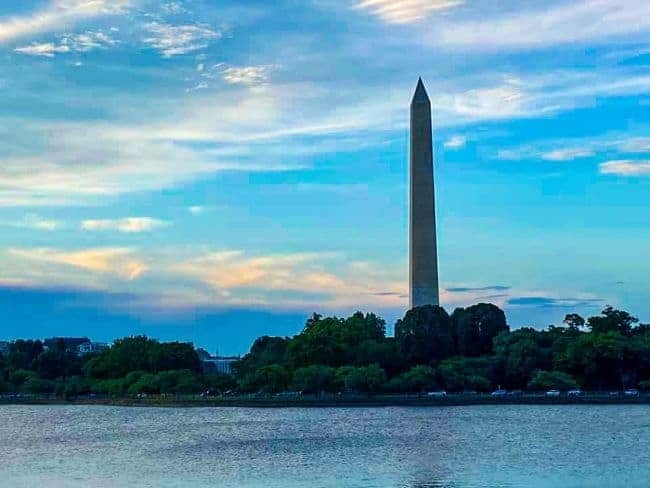
Walking tour of Washington DC Stop 2: The Washington Monument
Foremost is the Washington Monument. The obelisk-shaped Washington Monument is the centerpiece of the National Mall. It was not until 1848 that construction began, but the American Civil War and a lack of funding stalled it for several years. 1884 marked the completion of the monument, and 1885 marked its dedication.
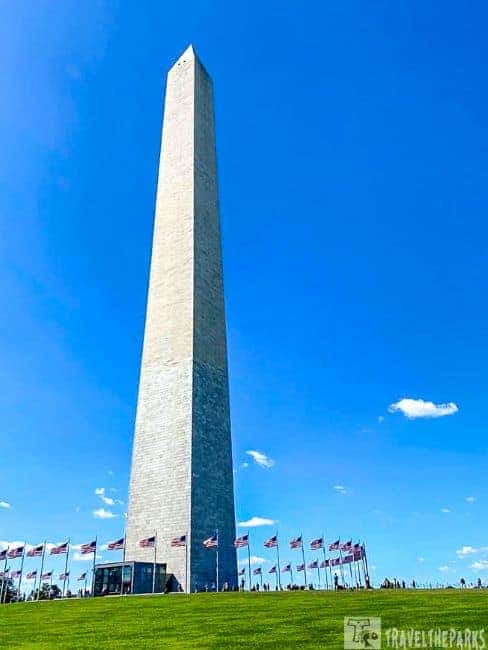
This monument stands at a height of 555 feet, 5 1/8 inches (169.29 meters) tall, and is one of the tallest structures in the city. Built to honor George Washington, the first President of the United States. Visitors can take a 70-foot-tall elevator to the observation deck at the top of the monument for a panoramic view of the city. If you have the stamina, go ahead and take the climb of 896 steps. From the observation deck windows, you have beautiful views of the Tidal Basin. The shimmering waters of the reflection pool make for good photography. The Washington Monument is open from 9 am to 4:45 pm daily. You can make a reservation online at Recreation.gov.
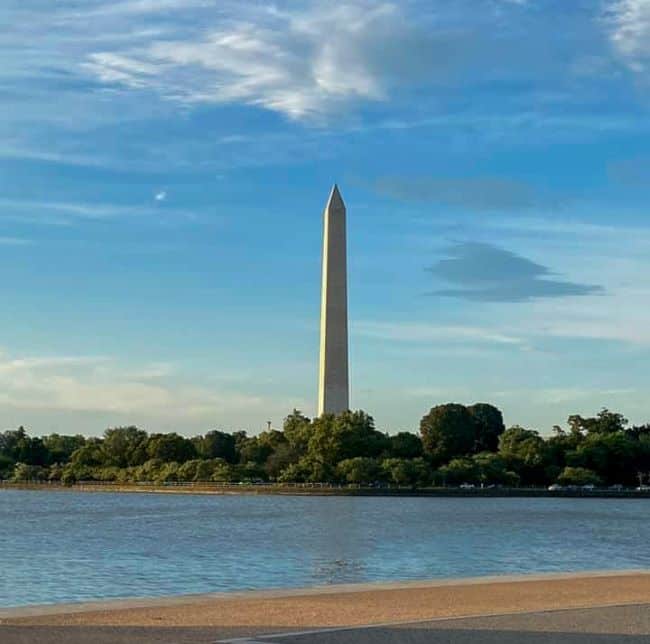
Over the years, the Washington Monument has become an important symbol of American democracy and is a popular tourist attraction in Washington, D.C. It has also been the site of many important events, including presidential inaugurations and other ceremonies.
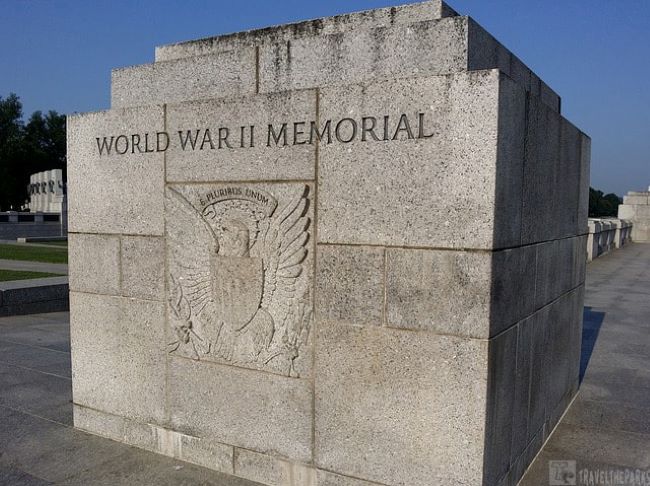

Self-guided tour of DC’s National Monuments – Stop 3: World War II Memorial
A more recent addition to the National Mall opened in May 2004. This memorial honors the 16 million Americans who served in the armed forces during World War II, as well as the more than 400,000 who died.
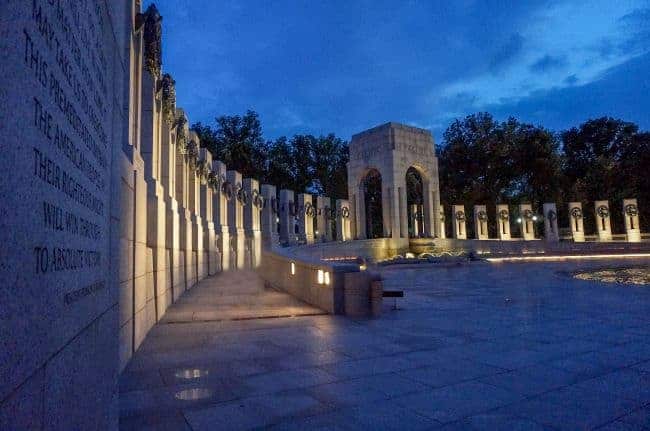
Many of whom paid the ultimate price for our freedom. Today was a day of connection and reflection. We pay tribute to “The Greatest Generation.” There is unity in the design of this memorial. The memorial features 56 pillars positioned in a semi-circle, representing the 48 states and eight U.S. territories that existed at the time of the war. Two 43-foot thought-provoking arches signify Atlantic and Pacific victories. These rotundas surround a serene fountain that is lit up at night and a sight to behold.
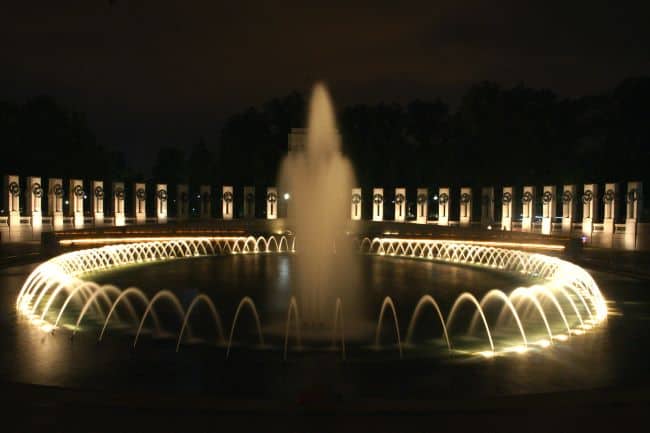
The impressive Freedom Wall contains the Field of Stars. Furnished with over 4000 gold stars, representing 400,000 lives lost. They gave their lives to restore our freedom. Overwhelming is the sheer number of lives lost; they gave their lives in service. Embossed on the front of the wall is the message, “Here we mark the price of freedom.”
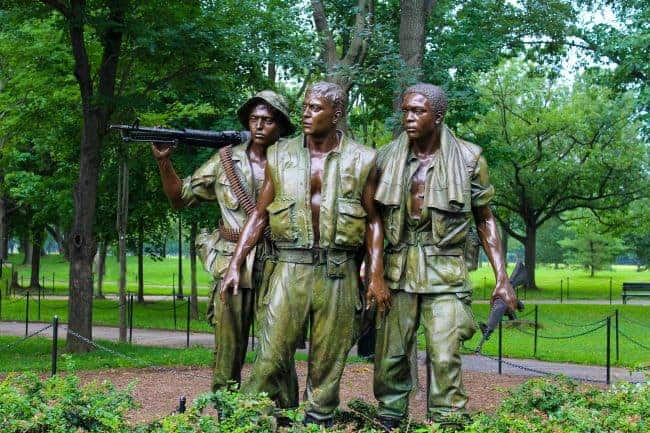
Stop 4: Vietnam Memorial – Wall of Faces: Honoring Heroes and Their Stories
The Vietnam Veterans Memorial honors the members of the U.S. armed forces who served and sacrificed during the Vietnam War. The memorial comprises two black granite walls that are inscribed with the names of over 58,000 service members who were either killed or went missing in action during the war.
It was designed by Maya Lin, a Yale University student, who won a national competition to design the monument when she was just 21 years old. The memorial was dedicated on November 13, 1982, and has become one of the most visited sites in Washington D.C.
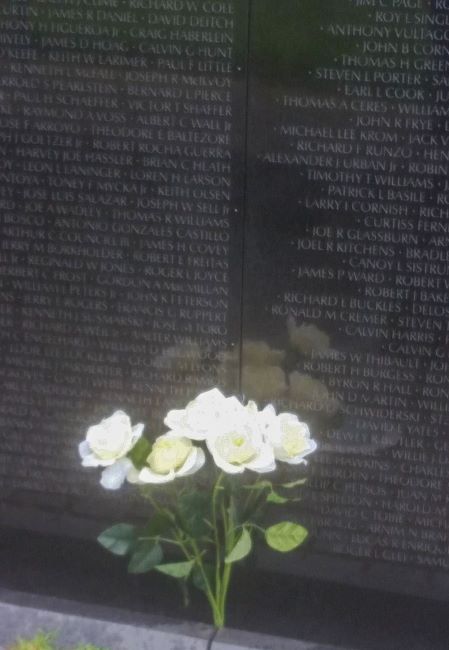
They orient the walls of the memorial in a V-shape, with one end pointing towards the Lincoln Memorial and the other end towards the Washington Monument. The names are listed in chronological order of their casualty dates, and visitors can search for the names of loved ones using a directory that is kept on site.
The Vietnam Veterans Memorial is a powerful symbol of the sacrifices made by service members during the Vietnam War. It has become a place of reflection and healing for many veterans and their families, and serves as a reminder of the human cost of war. Today, I take my time reflecting on those who have sacrificed for our freedom.
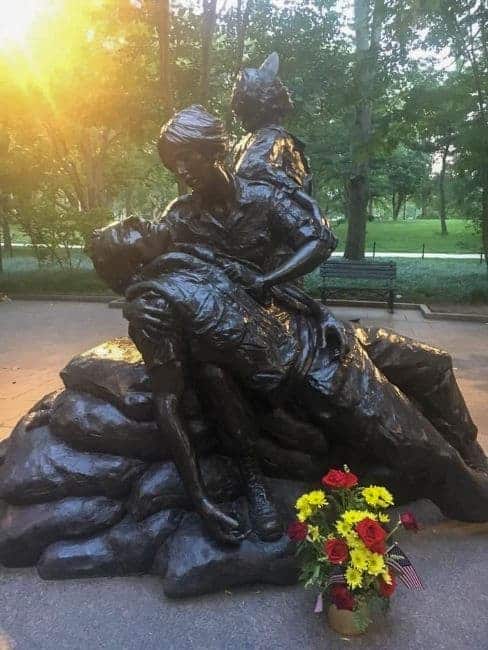
Stop 5: Vietnam Women’s Memorial – Honoring the Unsung Heroes
The Vietnam Women’s Memorial is a memorial that honors the women who served in the Vietnam War. The memorial was dedicated on November 11, 1993, and was designed by Glenna Goodacre, a sculptor from Santa Fe, New Mexico.
The memorial features three life-sized statues of women: a nurse tending to a wounded soldier, a grieving woman holding an American flag, and a woman looking up to the sky, symbolizing the hope of those waiting for their loved ones to return home. The statues are made of bronze and are set on a granite base that lists the names of the 265,000 women who served in the Vietnam War, including the eight women who died there.
The Vietnam Women’s Memorial is an important tribute to the contributions of women in the military and serves as a reminder of the sacrifices they made during the war. It is near the Vietnam Veterans Memorial, which honors all who served in the Vietnam War. Together, these two memorials serve as powerful reminders of the human cost of war and the courage and sacrifice of those who served.
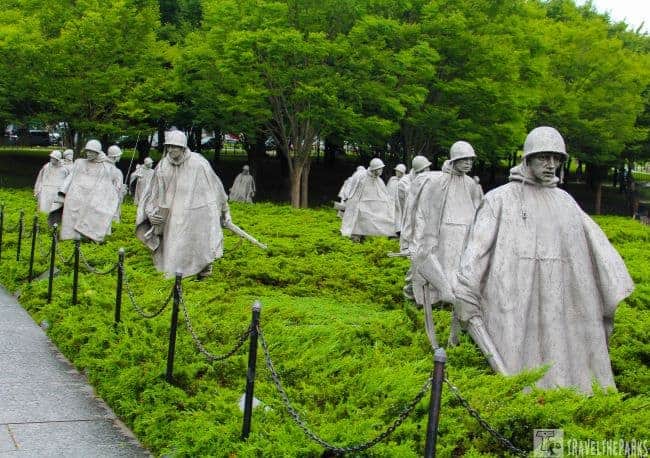
Stop 6: Korean War Memorial – Reflecting on the Past, Remembering the Heroes
The Korean War Memorial, at the southwestern end of the National Mall, honors the members of the United States Armed Forces who served and sacrificed during the Korean War. The memorial was dedicated on July 27, 1995, on the 42nd anniversary of the armistice that ended the conflict.
The memorial centerpiece features 19 stainless steel statues of soldiers, each one over seven feet tall, representing a squad on patrol during the Korean War. These statues are situated in a triangular formation, with a black granite wall on one side that features images of actual combat soldiers and other personnel who served in the war. The platoon of soldiers is standing in a juniper forest, creating a very dramatic scene.
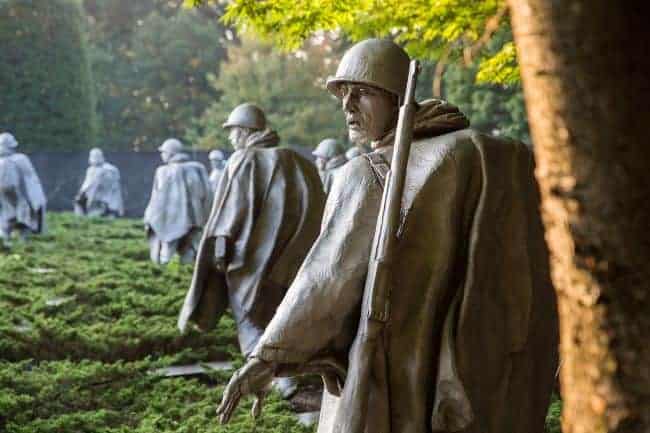
The Surreal Mural Wall of the Korean War Memorial: An Artistic Tribute to Heroic Sacrifice
The different soldiers signify the many branches of the Armed Forces. Looking across their images reflects on the Mural Wall. This wall honors the many men, women, and service dogs who served. Standing a few steps back from the Mural Wall, visitors see 38 images. These create a mountain effect and symbolize the 38th parallel. The wall lists the number of casualties and other statistics related to the war, as well as the names of the 22 countries that served in the United Nations forces during the war.
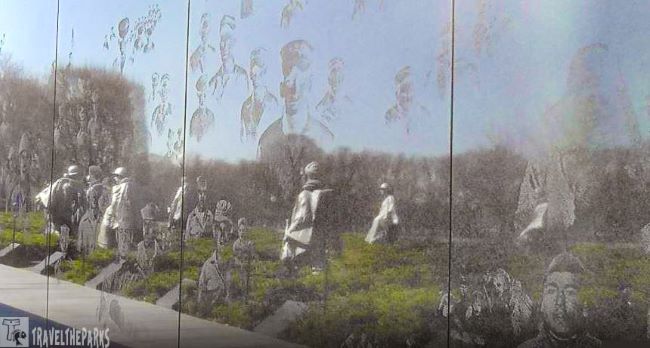
The Korean conflict is often called the forgotten war. I found this monument intensely emotional. Perhaps it was the “Freedom Is Not Free” inscribed above the Pool of Remembrance. The reflecting pool serves as a reminder of the physical and emotional toll of the war.
The Korean War Memorial is a powerful tribute to the sacrifices made by the members of the U.S. Armed Forces during the Korean War. It is also a reminder of the ongoing commitment to the principles of freedom, democracy, and human rights, for which so many Americans and others have fought and sacrificed.
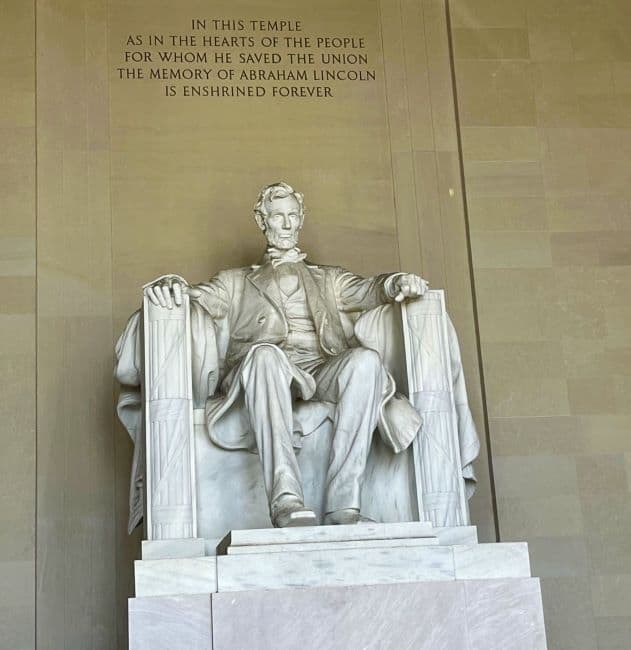
A Must-see monument on a DC walking tour Stop 7: The Lincoln Memorial
At the western end of the National Mall, this is a fine tribute to our 16th president, Abraham Lincoln. It was proclaimed it on May 30, 1922. The memorial features a 19-foot-tall statue of Lincoln seated in contemplation. Surrounded with the inscriptions of two of his most famous speeches, the Gettysburg Address and his Second Inaugural Address. Carved from 28 blocks of white Georgia marble. He gazes out over the reflection pond towards the Washington Monument.
Directly behind the Lincoln statue is an inscription that reads:

Lincoln Memorial Facts: Discovering the Legacy of Abraham Lincoln
The memorial chamber includes 36 columns, each representing one of the states of the union at the time of Lincoln’s term. This chamber gives the appearance of a Greek temple. The north wall of the chamber has the words of his second inaugural address. Whereas, the south wall has the Gettysburg Address embossed on the wall.
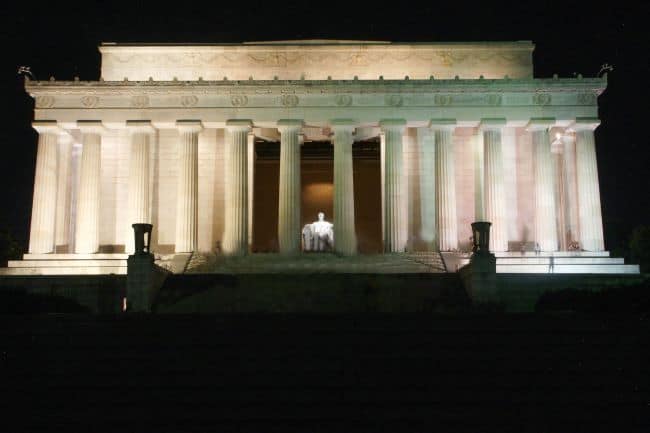
I was taken in by the Lincoln Memorial as it can had breathtaking views of the National Mall and surrounding monuments. It pays their respects to one of the greatest leaders in American history. The Lincoln Memorial is a powerful symbol of the enduring values of the United States. It serves as a reminder of the importance of leadership, equality, and justice for all. What I found most interesting was the floor plaque marking where Dr. King stood when he gave his speech during the Million Man March. I envisioned how he must have felt, placing me in that historic moment.
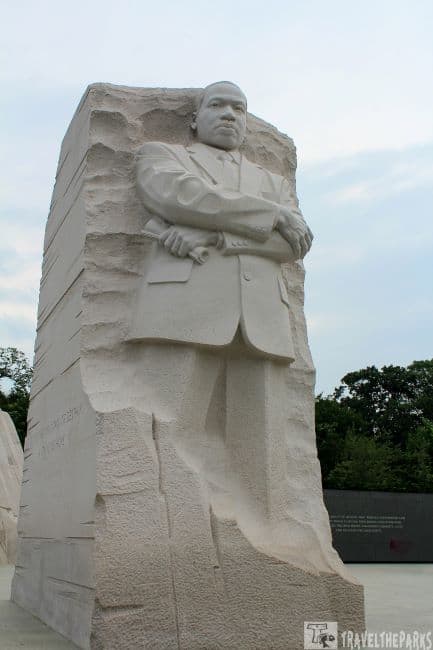
Stop 8: Martin Luther King Jr. Memorial: A Tribute to a Mountainous Man of Dreams and Change
North of the Lincoln Memorial lies a formidable 30-foot granite statue of the man who became famous for his speech, “I Had a Dream.” Dedicated in August 2011, the Stone of Hope represents humanitarian Martin Luther King Jr. a champion of the 1964 civil rights movement. This memorial honors the civil rights leader Martin Luther King Jr. Inscribed on the walls of the memorial are quotes from King’s speeches and writings.
A civil rights leader, he worked tirelessly to end racial segregation and racial discrimination. The stone faces the Lincoln Memorial, where during the March on Washington he gave his message of freedom and justice. To reach the Stone of Hope, visitors symbolically venture through two smaller white stones. These represent the “Out of a mountain of despair.” Forever engraved on the Inscription Wall are his inspiring words. We see his legacy in these fourteen quotes.
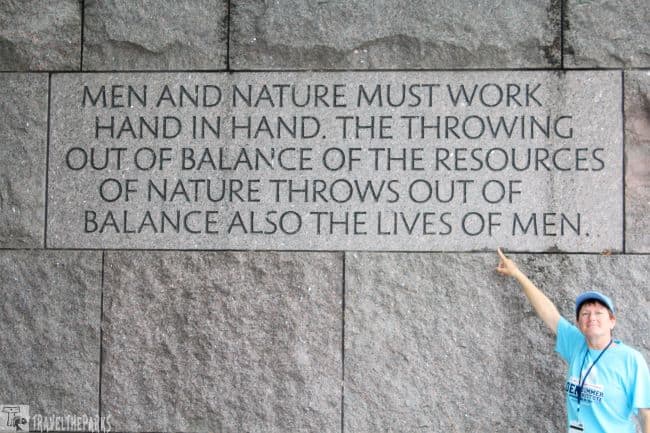
Stop 9: Franklin Delano Roosevelt Memorial – Envisioning the New Deal and Shaping a Nation’s Destiny
On the West Potomac Park famous Cherry Walk is the Franklin Delano Roosevelt Memorial. They dedicated the memorial on May 2, 1997. It stands as a tribute to our 32nd president. Franklin D. Roosevelt was a man of the people, and the only president to be elected to 4 terms of office.
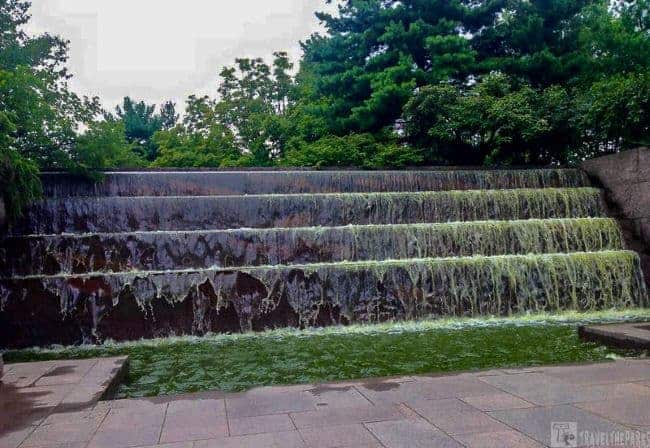
The memorial features several outdoor galleries and exhibits, including bronze statues and sculptures, water features, and quotations from Roosevelt’s speeches. They designed the memorial to reflect the four terms of Roosevelt’s presidency, with each of the four outdoor rooms representing a different term in office.
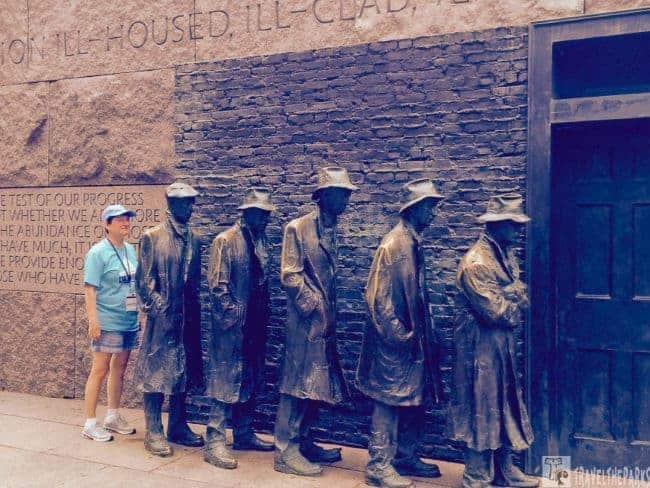
A Journey into Franklin Delano Roosevelt’s Monumental Legacy: Four Terms
I meandered through the series of “rooms” representing his four terms of office. Wandering the rooms, viewing many of Roosevelt’s famous quotes inscribed on the walls and walkways, it was interesting to interact with some sculptures. Each evokes the feelings and emotions of the time. I did not realize he was our longest-serving president. Doctors diagnosed FDR with polio at 39 a few years before becoming president, and the monument has him in his wheelchair.
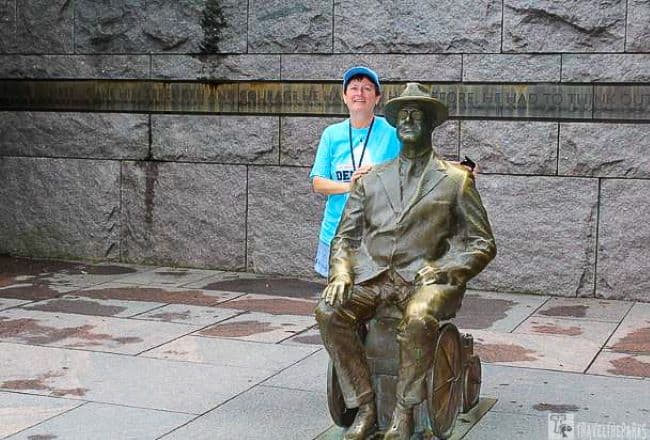
The flagship room hosts the iconic 17-foot bronze statue of FDR and his trusty companion Fala, a Scottish Terrier. I also loved the tribute to Eleanor Roosevelt as well. I was awestruck by the quotations etched on the wall. They express Roosevelt’s philosophy and celebrate his legacy. Dominating his presidency was The Great Depression. Famous for the New Deal legislation. It laid the foundation for today’s social programs. These programs support our most vulnerable citizens. However, World War II saw the economy rebound. Alas, during this time, the president’s health declined, and FDR died before the end of WWII.
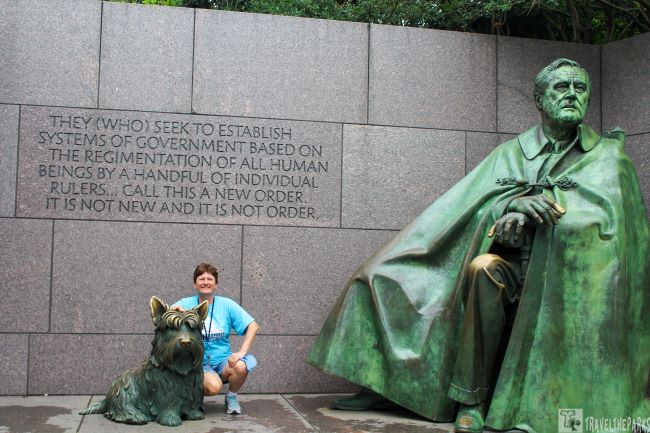
Stop 10: Thomas Jefferson Memorial – An Epic and Imposing Image of Enlightenment
Monticello has been on my bucket list of places to visit. The Thomas Jefferson Monument was my favorite piece of architecture.
Dedicated in 1943, the Jefferson Memorial was built to honor Thomas Jefferson, the third President of the United States and author of the Declaration of Independence. It is situated on the south bank of the Tidal Basin, near the National Mall.
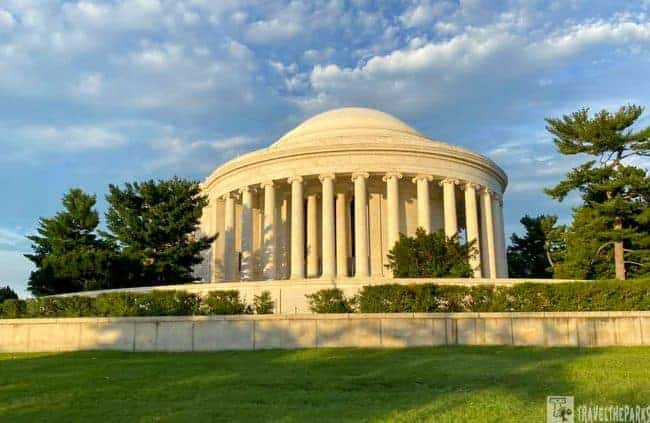
The memorial was designed by architect John Russell Pope and completed in 1943. It features a large bronze statue of Jefferson surrounded by columns and inscriptions of some of his famous quotes.
The interior of the memorial features a domed ceiling with an intricate mural depicting scenes from Jefferson’s life, including his role as the principal author of the Declaration of Independence, his time as the Governor of Virginia, and his role as President. The memorial features a 19-foot-tall statue of Jefferson and quotes from his writings.
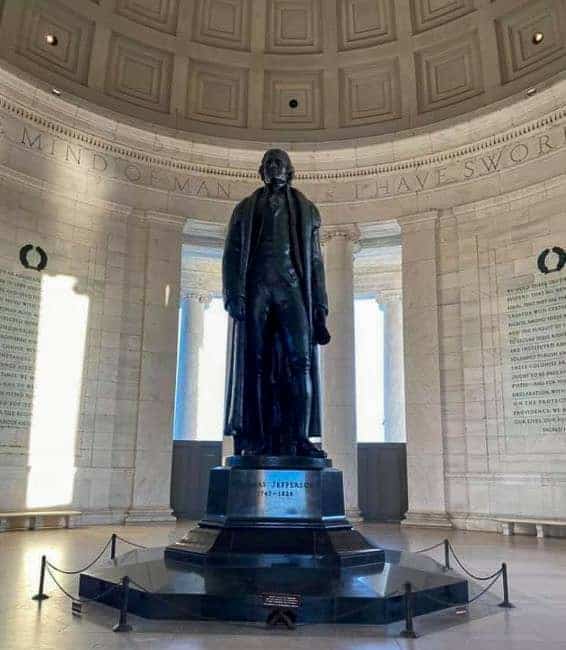
The Jefferson Memorial is a popular tourist attraction on the banks of the Potomac River, particularly during the annual National Cherry Blossom Festival, when the surrounding cherry trees are in bloom. I loved exploring the memorial and learning about Jefferson’s life and legacy through exhibits and interpretive materials. Many historic novels have been written about the life of Thomas Jefferson. I’ve read a few. He is a fascinating, complex man. A leader, he imparted liberty and fought for democracy.
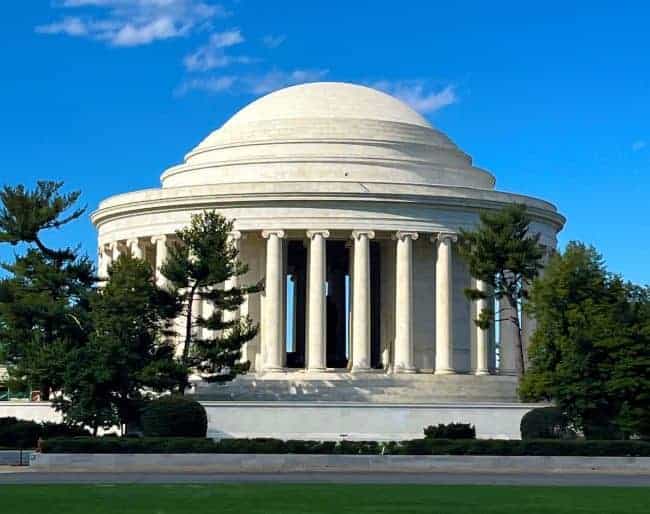
Washington Monumental Treasures Honorable Mention: Exploring More Iconic Stops in the Nation’s Capital
There are many monuments and museums that make Washington, D.C. a special place, and each one serves as a powerful reminder of the history and values that have shaped the United States.
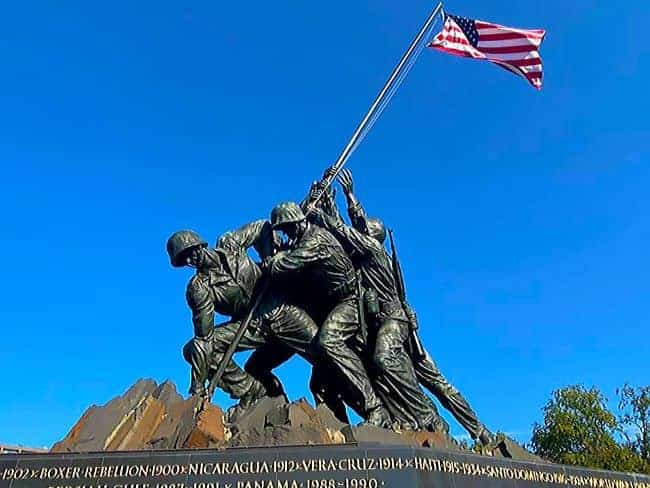
Stop 11: U.S. Marine Corps War Memorial–Honoring Heroes at the Iwo Jima Memorial
The Iwo Jima Monument, also known as the Marine Corps War Memorial, is a military monument in Arlington, Virginia, just across the Potomac River from Washington, D.C. This monument was dedicated on November 10, 1954, the 179th anniversary of the Marine Corps. It has since become a symbol of the bravery and sacrifice of the Marines and all members of the U.S. Armed Forces.
The monument features a bronze statue of six U.S. Marines raising the American flag on Mount Suribachi during the Battle of Iwo Jima in World War II. This statue is based on a famous photograph taken by Joe Rosenthal during the battle. The statue stands 78 feet tall, including the base, and weighs approximately 100 tons.
The U.S. Marine Corps War Memorial is in a prominent position in Arlington Ridge Park, overlooking the National Mall and the Lincoln Memorial in Washington, D.C. It is a powerful tribute to the courage and sacrifice of the Marines, and serves as a reminder of the ongoing commitment to defending the values and freedoms that make the United States great.
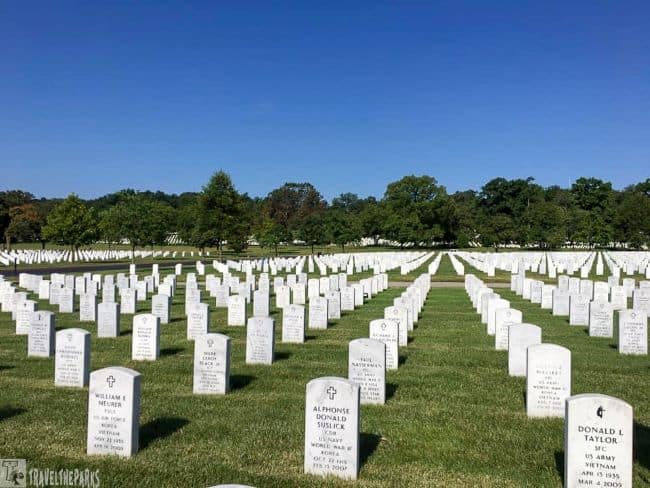
Stop 12: Arlington National Cemetery – A Sacred Resting Place of Heroes
It is our nation’s largest military cemetery and stands as a testament to those who have served our country. What to see? The John F. Kennedy burial, at Robert E. Lee House, and the Tomb of the Unknown Soldier. Memorials in honor of the Space Shuttle Challenger & Columbia Memorials, Nurses Memorial, and many more. Download the app to help you navigate the grounds. You could easily spend a day seeing everything.
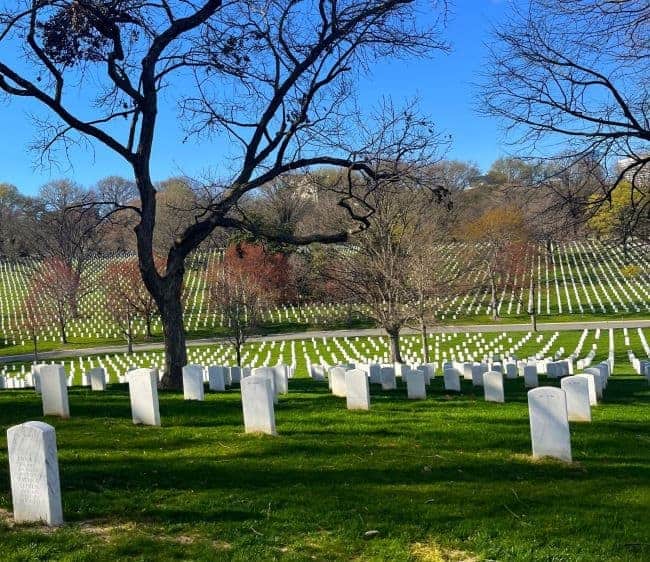
Arlington National Cemetery is a United States military cemetery in Arlington County, Virginia, just across the Potomac River from Washington, D.C. The cemetery is the final resting place for over 400,000 active-duty service members, veterans, and their families, and is considered one of the most hallowed grounds in the United States.
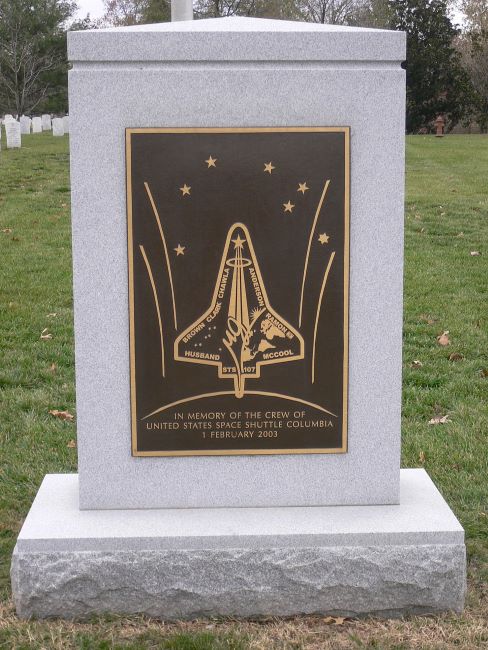
The cemetery was established during the Civil War in 1864 on the grounds of Arlington House, the former estate of Confederate General Robert E. Lee. Today, the cemetery covers 624 acres and is the final resting place for military personnel from all branches of the U.S. Armed Forces, including the Space Force, and their families.
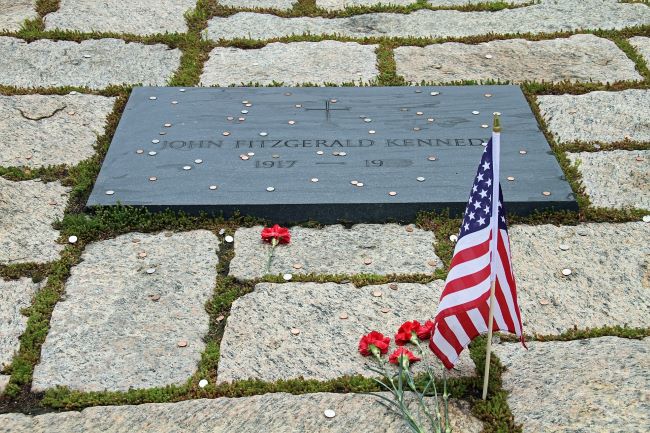
More than Just a Cemetery: The Profound Significance of Arlington National Cemetery
Arlington National Cemetery is also the site of many important memorials and monuments, including the Tomb of the Unknown Soldier, the Memorial Amphitheater, and the Women in Military Service for America Memorial. Visitors can take guided tours of the cemetery, attend wreath-laying ceremonies, and visit the graves of some of the most prominent figures in American military history, including President John F. Kennedy, General George Patton, and Admiral Robert E. Peary.
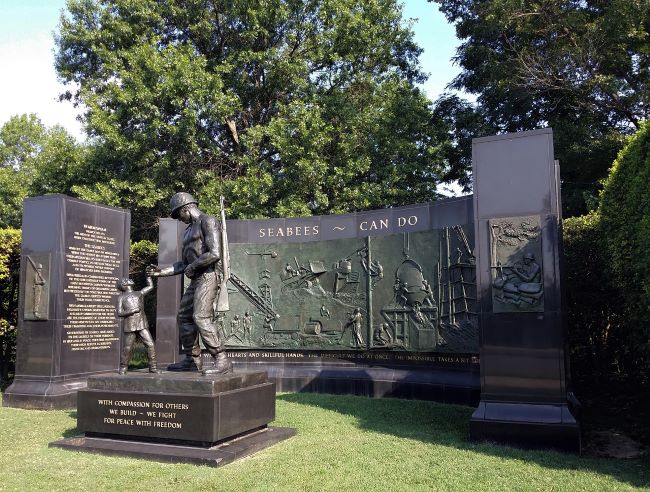
Arlington National Cemetery is a solemn and sacred place, and serves as a reminder of the sacrifices made by those who have served and died in defense of the United States. It is a symbol of the country’s commitment to honoring and remembering its service members and their families.
The Tomb of the Unknown Soldier: A Monument of Unyielding Respect and Honor
The Tomb of the Unknown Soldier is a monument dedicated to the memory of unidentified soldiers who have lost their lives in wars. It is a symbol of gratitude and respect for the sacrifices made by these unknown soldiers and for all who have served and died for their countries. Established in 1921, it signifies all those that did not make it home. The sarcophagus holds the remains of an unidentified American soldier from World War I. They guarded the tomb by the United States Army’s 3rd Infantry Regiment, known as The Old Guard, and the changing of the guard ceremony is a popular attraction for visitors.
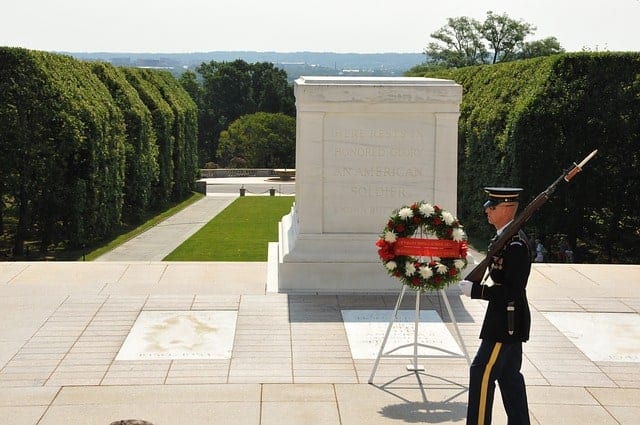
Inscribed on the back of the Tomb are the words, “Here rests in honored glory, an American soldier known but to God.” I paid my respects watching the changing of the guard. The 30-minute ceremony left me feeling emotionally charged.
Whether you agree or disagree with the morality of war, reflecting on another person’s intent makes one question their philosophy. I took a quiet, thoughtful walk by myself to see the Kennedy gravesite and the eternal flame. Robert E. Lee’s house is on the hill above the Kennedy gravesite. Visiting Arlington National Cemetery, you feel grateful to be a citizen in this glorious country. It is a surreal experience.
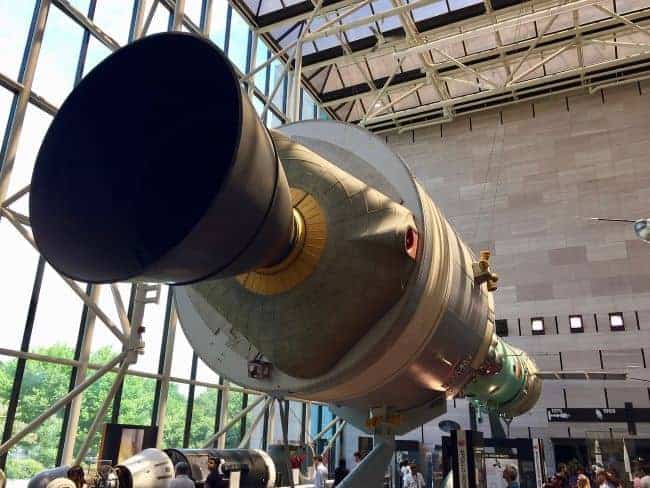
Stop 13: Smithsonian Institution Museums – Unveiling the World’s Knowledge and Artistry
All these museums are popular stops in Washington, DC. The Smithsonian Institution is a group of 17 museums, galleries, and research facilities. The Smithsonian is the world’s largest museum and research complex, and its collections include over 154 million objects, artworks, and specimens.
Admission to all Smithsonian museums is free, and they are open every day of the year except for Christmas Day. They offer a range of exhibits, programs, and educational activities for visitors of all ages.
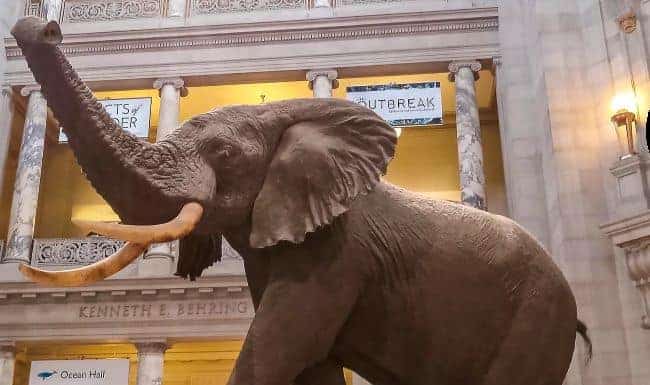
Unearth the Wonders of Life: Exploring the National Museum of Natural History
The Natural History Museum is my favorite. Everyone needs to go. It’s free and fabulously educational. It is one of the most visited museums in the world, with over 7 million visitors each year.
The museum’s collection includes over 145 million specimens, artifacts, and specimens related to natural history and the biological and cultural diversity of the planet. Choose from dinosaurs, life in the ocean, forensic anthropology, mammals, human origins, or the many other exhibits. For instance, as an educator, I am passionate about geology. They have a fascinating collection of fossils, meteorites, the Hope diamond, and other rocks & minerals.

The butterfly exhibit is magical. Entering the pavilion, I wandered through the habitat and walked among the butterflies, observing their colorful wings and intricate patterns up close. They designed the exhibit to simulate a tropical rainforest environment, with lush vegetation, a running stream, and a variety of flowers and plants that serve as food and habitat for the butterflies.
Some of the museum’s most famous exhibits include the Hope Diamond, the world’s largest collection of preserved insects, and the Hall of Human Origins, which explores the evolution of humans and their relationship to other primates.
Don’t miss the dinosaurs. Amazingly, these gigantic animals roamed the earth some 67 million years ago. The fully intact 40-foot T-Rex biting into a Triceratops will delight the kids.
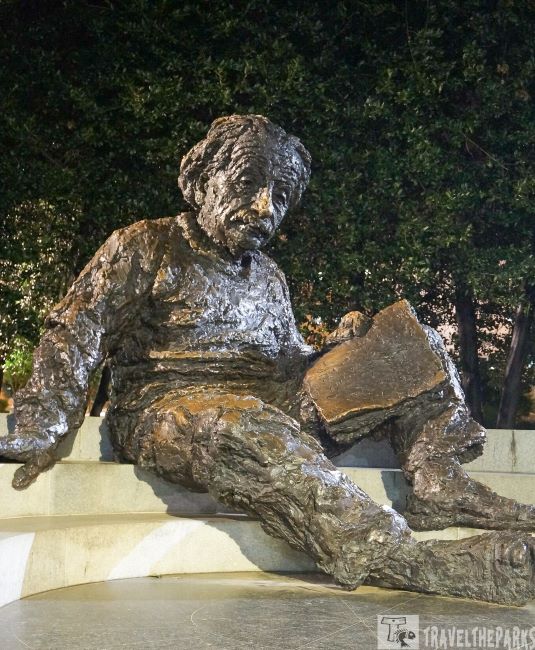
These museums have something to offer for everyone: a diverse world of knowledge and discovery
- National Air and Space Museum -you will see the lunar landers, Apollo 11 capsule, Japanese bombers, and the Wright Brothers exhibit.
- National Museum of African American History and Culture-This museum is dedicated to preserving and sharing a rich history and culture of African Americans in the United States.
- Smithsonian American Art Museum–extensive collection of paintings, photos, and sculptures by famous American artists.
- United States Holocaust Memorial Museum-A very eye-opening experience reading on the suffering inflicted and other atrocities.
- National Museum of American History–Transportation, science, pop culture, military, and presidential history all in one place.
- National Museum of the American Indian-historical artifacts that tell the story of the indigenous people.
- National Academy of Sciences– take your picture with the bronze statue of Albert Einstein. Lunch tours are great!
- National Portrait Gallery–The museum’s collection includes portraits of presidents, First Ladies, politicians, artists, scientists, and other notable individuals.
- National Postal Museum-over 6 million objects related to postal history, including stamps, postal uniforms, vehicles, mailboxes, and more.
- Hirshhorn Museum and Sculpture Garden-features a collection of modern and contemporary art, including paintings, sculptures, photographs, and mixed media works.
- Freer Gallery of Art and Arthur M. Sackler Gallery–are important museums that offer visitors a chance to explore the rich artistic traditions of Asia and America through their diverse collections and engaging programs.
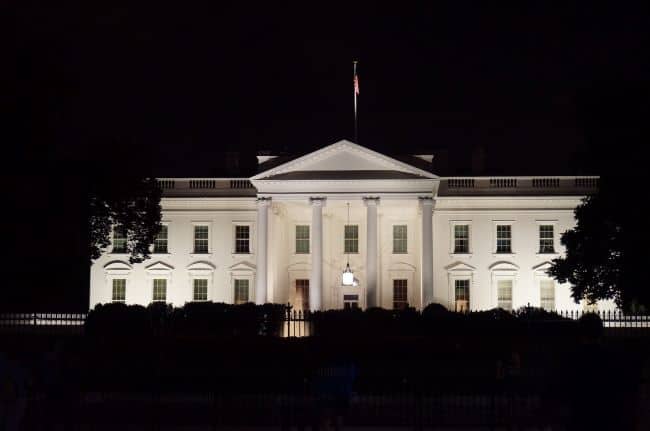
Stop 14: The White House – Presidential Park: A Glimpse into the Heart of American Democracy
A short walk across Constitution Avenue brings you to this iconic building with its green lawn and garden fountains. The White House is at 1600 Pennsylvania Avenue and is the official residence of the President of the United States. The self-guided tours access the East Wing. You can tour the Blue Room, Red Room, and Green Room; the State Dining Room; and the China Room. Each room has security and secret service. You must place tour requests through your congressional representative or embassy at least 21 days in advance. I recommend submitting the request 90 days in advance if you know you will go to D.C. I wish we had taken the time to plan a tour. Next time!
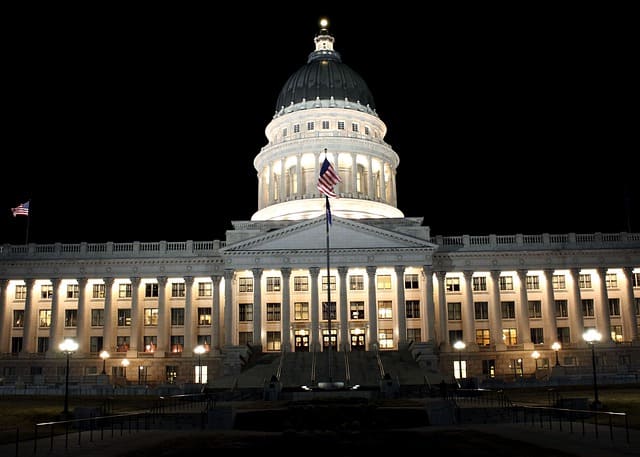
Stop 15: The US Capitol Building & The National Archives – Where History, Democracy, and Records Unite
The United States Capitol Building is the home of the United States Congress and the seat of the legislative branch of the U.S. federal government. It is located on Capitol Hill in Washington, D.C., and is one of the most recognizable landmarks in the city.
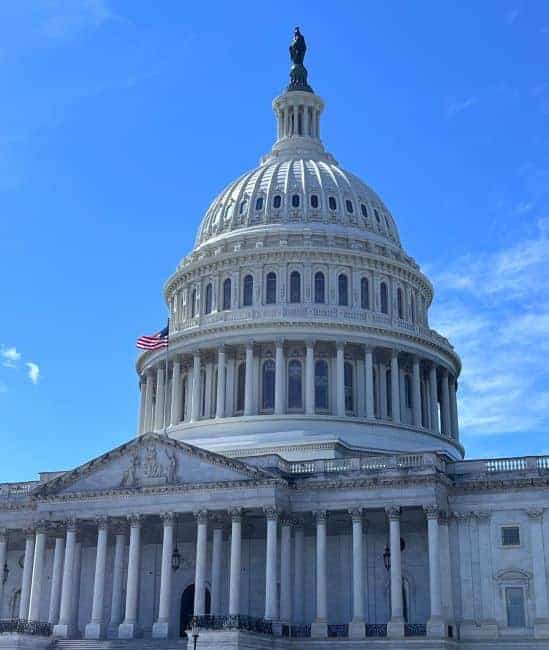
The Capitol Building was designed by architect William Thornton and was first occupied by Congress in 1800. The building has undergone several renovations and expansions over the years, including the addition of the iconic dome in the mid-1800s.
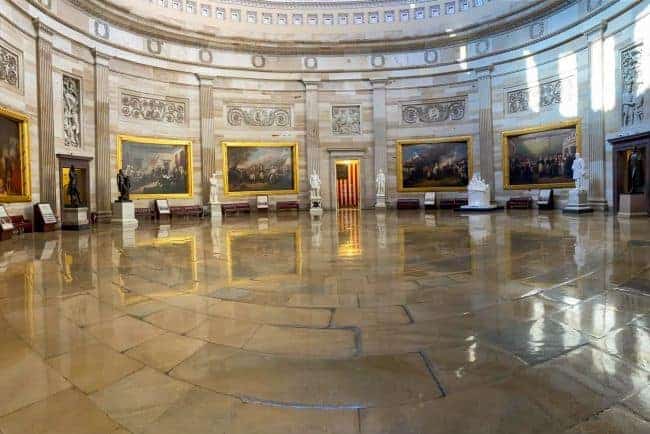
The building features a central rotunda, which is decorated with artwork and statues commemorating important people and events in American history. The building also houses the chambers of the House of Representatives and the Senate, as well as offices for members of Congress and various congressional committees.
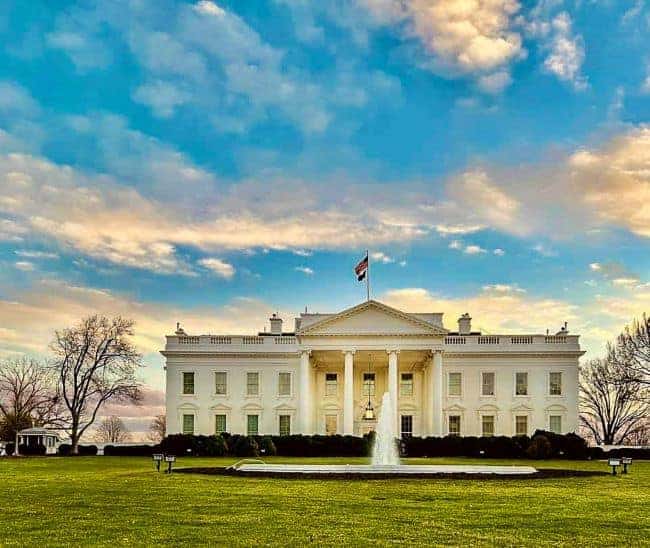
The Capitol Building is open to the public for tours, which can be arranged through the office of a member of Congress. Visitors can explore the historic halls and chambers of the building, as well as learn about the history and function of the U.S. Congress. The tours are free and last about 40 minutes. At the visitor center, walk around the museum. Check out all the statues, there are two from each state. You can also walk through the Capitol underground tunnel to the Library of Congress across the street.
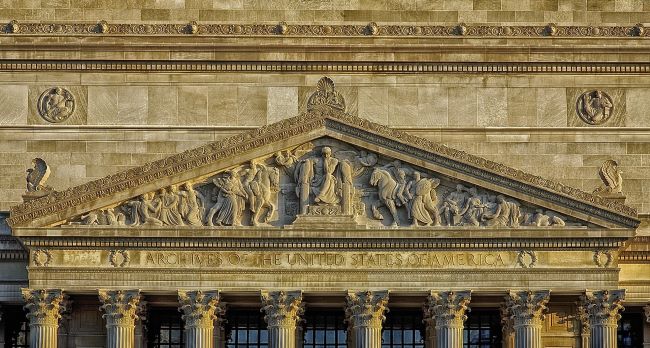
The National Archives – Guardians of the Nation’s Story
The National Archives and Records Administration (NARA) is an independent agency of the U.S. federal government responsible for preserving and providing access to the historical records of the United States. If you want to see the Declaration of Independence, combine this tour with a visit to the National Archives. I recommend visiting on a weekday. Otherwise, you can expect an endless wait.
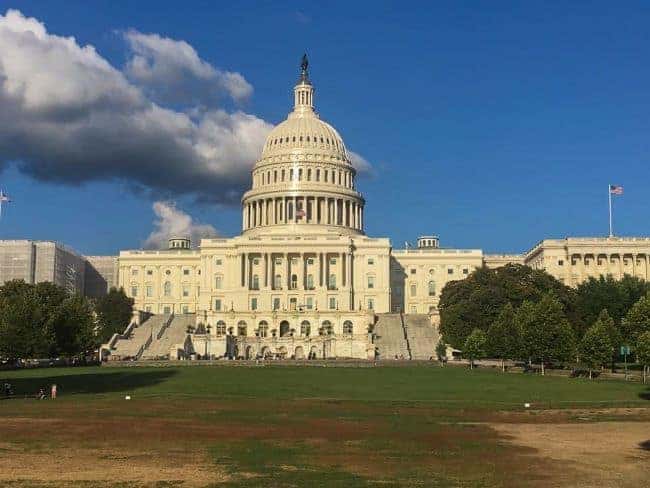
The National Archives holds records dating back to the founding of the United States, including the Declaration of Independence, the Constitution, and the Bill of Rights. It also houses records related to military service, immigration, naturalization, federal court cases, and more.
Besides preserving and maintaining records, the National Archives provides public access to these records through its research rooms, online databases, and traveling exhibits. Researchers, genealogists, historians, and other interested individuals can access records at the National Archives and at its regional facilities across the United States.
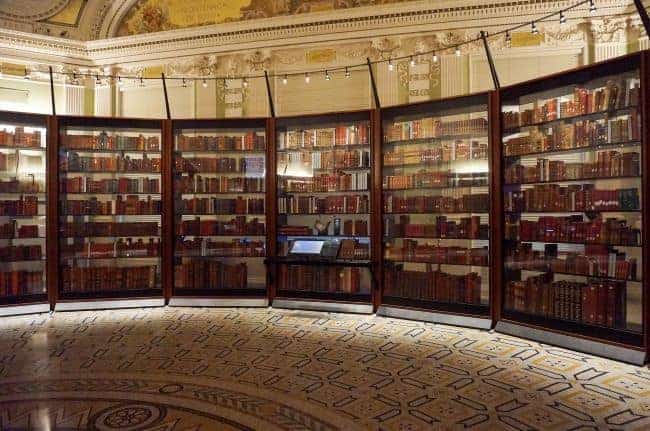
The Library of Congress – A Treasure Trove of Knowledge and Cultural Heritage
The Library of Congress is the largest library in the world and serves as the national library of the United States. The act of Congress established it in Washington, D.C., in 1800.
The Library of Congress houses more than 170 million items, including books, manuscripts, maps, photographs, films, sound recordings, and other materials related to American and world history and culture. The collection is continually expanding through acquisitions, donations, and other means.
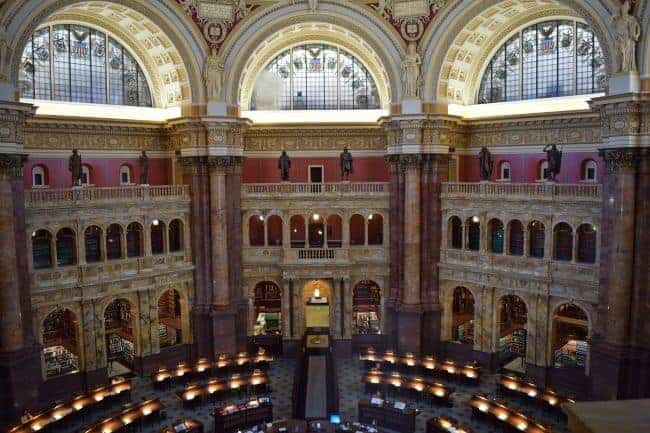
In addition to its role as a library, the Library of Congress is also the research arm of the U.S. Congress and serves as a source of information and research for members of Congress and their staffs. The library’s collection includes materials from all over the world, and its staff of experts can help researchers find and access the resources they need.
The Library of Congress also provides a wide range of public programs, exhibitions, and educational resources. These include tours of the library’s facilities, online exhibits and digital collections, and educational programs for students and teachers.
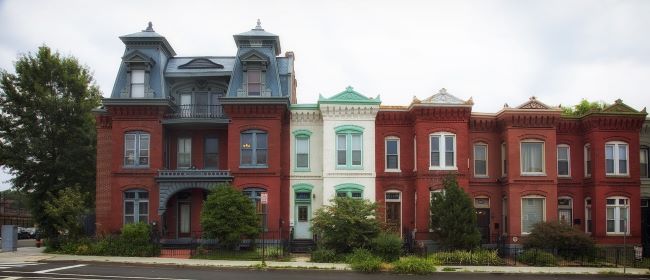
Stop 16: Embassy Row – A Self-Guided Tour of Diplomatic Elegance
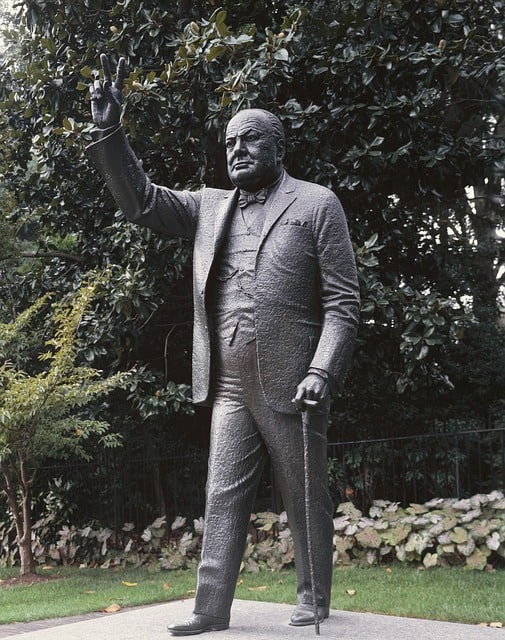
Embassy Row is along Massachusetts Avenue, where delegations of foreign countries are housed. I took this as a walking tour, but be warned, it’s uphill. A few of the embassies are in pretty colored row houses, each building has its unique architecture. These buildings were originally mansions built for millionaires in the 19th century. Some embassies are easier to identify, the British embassy has a statue of Winston Churchill. Another way to identify the countries is by recognizing the flags and the diplomatic license plates.
I am amazed by the sheer number of monuments and historical places there are in Washington, DC. This is an incredible city!! If you get the chance to visit, try to stay more than a day or two. Give yourself time to enjoy world-class dining, chic shopping, and see other historical landmarks.
Note: Shenandoah National Park is an easy day trip from Washington
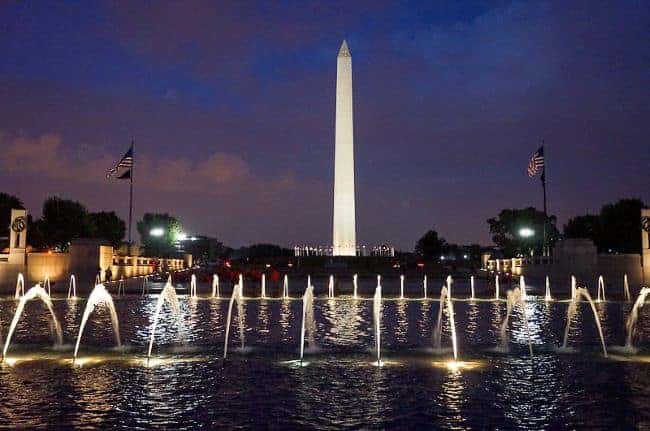
Important Reminders for Your Monumental Journey in Washington, D.C
- Parking is limited and expensive in the city. The best ways to navigate the city is by walking or taking the Washington Metro.
- Remember to wear comfortable shoes, you will hike a suitable distance.
- One of the best times to see the monuments is to visit the National Mall during the evening hours. Since the memorials are open 24/7, why not see them when crowds have usually died down?
- Worried about security? The park is well lit and heavily patrolled at night.
- Do your research ahead of time. If you plan to visit any government buildings, be aware of the security requirements or book tour tickets in advance.
- When to go? If possible, plan your trip in the spring to coincide with the Cherry Blossom Festival. These spectacular trees in full bloom along the Tidal Basin are a sight to behold!!
Final Thoughts on A Walking Tour of Washington’s Monumental Treasures
This is a worthy stop on any East coast road trip. Whether you are with a tour group or solo traveler to Washington, DC, walking the monuments is a must-do for any visitor. In the end, a walking tour of Washington’s monumental treasures is not just a sightseeing adventure—it’s a journey of discovery!
Do you have any tips for things to do in Washington, DC? Please share in the comments below!
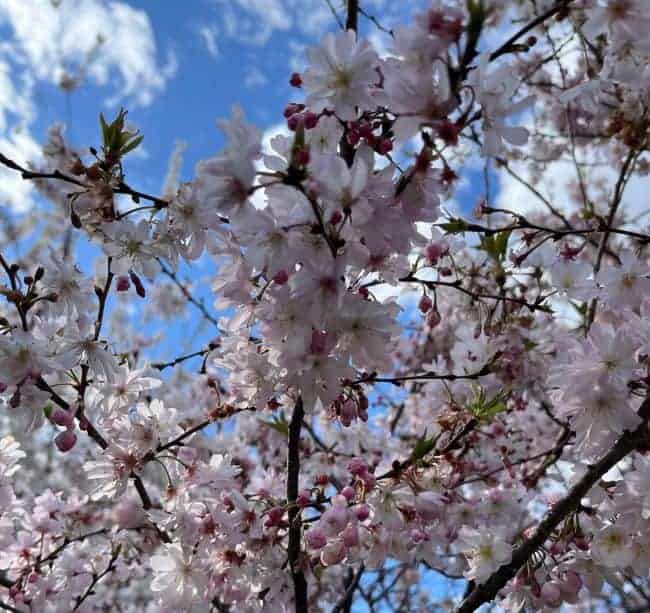

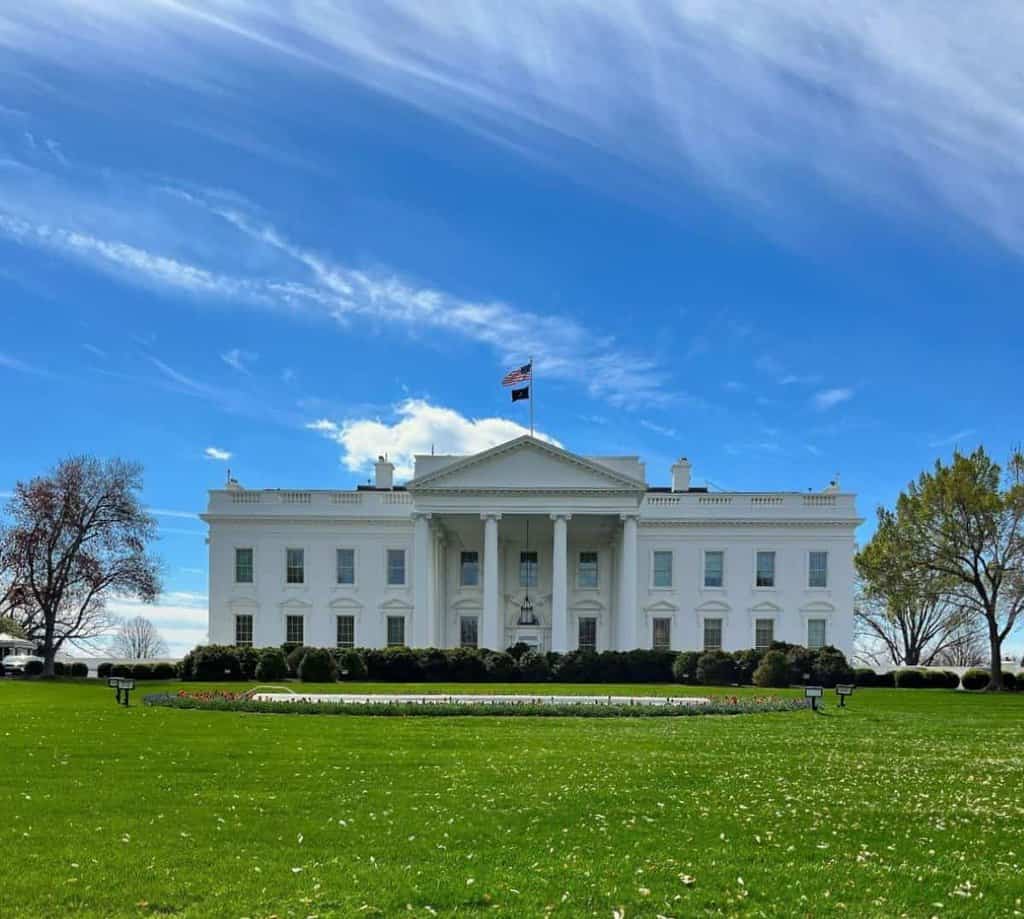
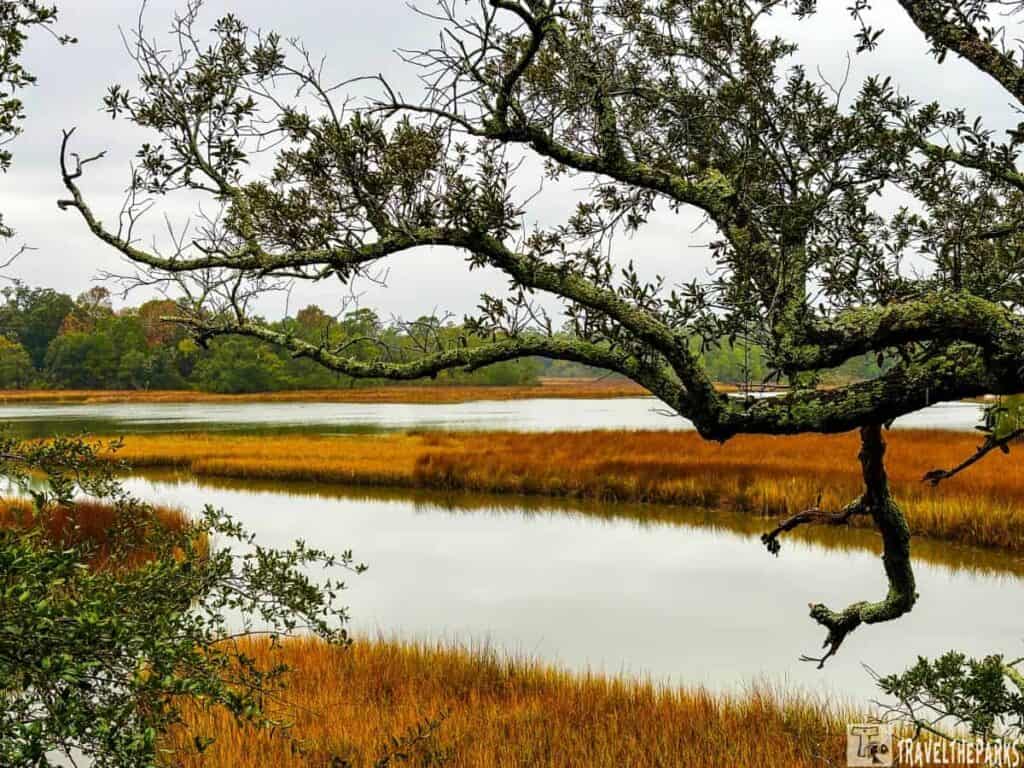

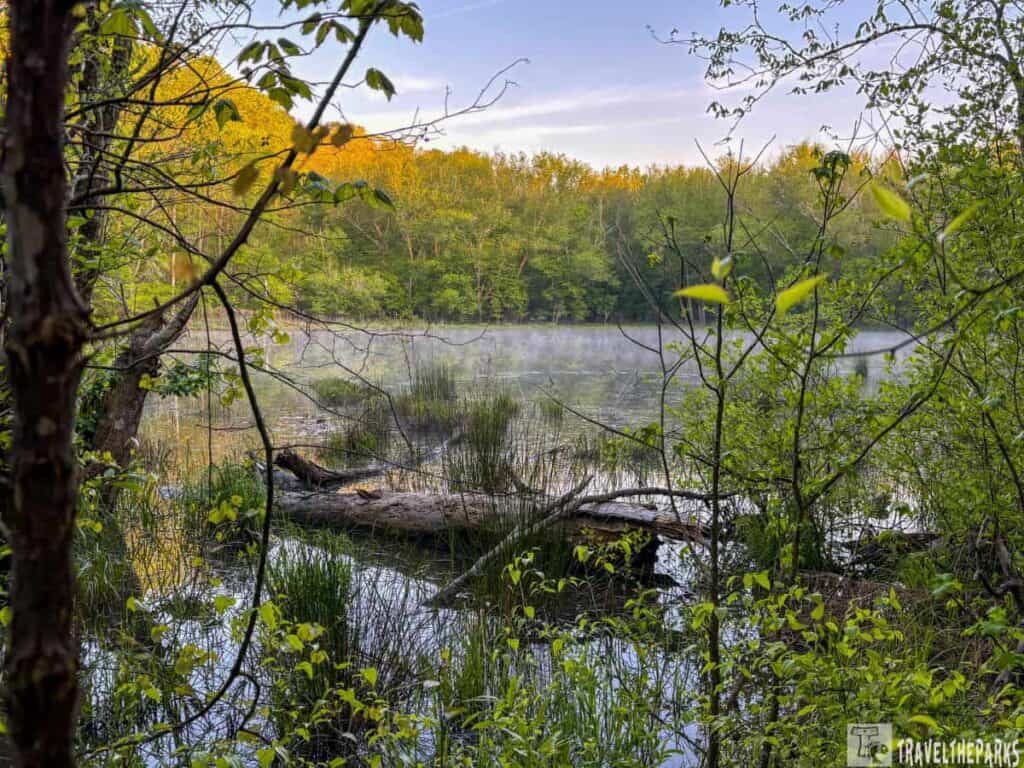
Father Vint
I love Washington. The museums are so cool for kids. I found this info brought back good memories thank you for sharing.